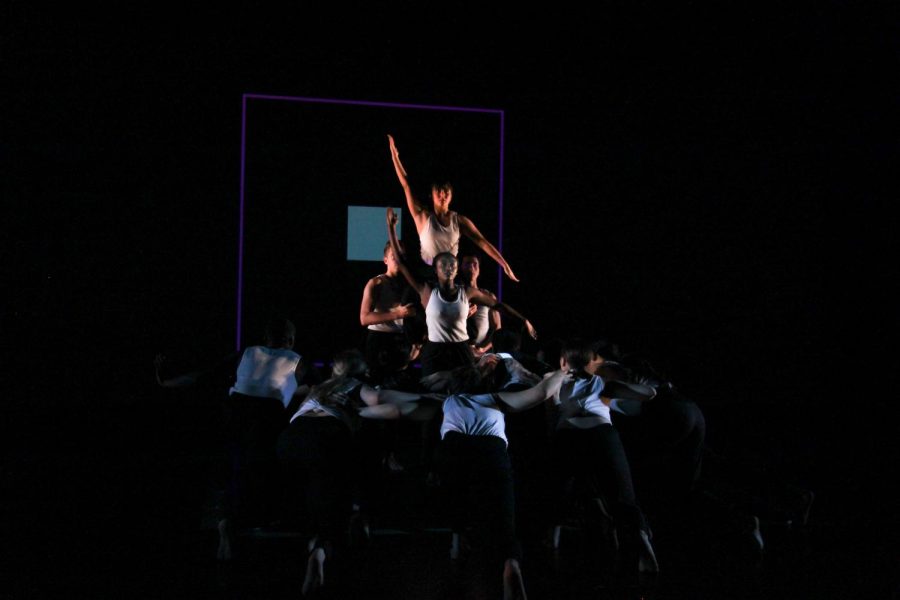Since the university announced that the rest of the semester would be happening remotely due to the COVID-19 outbreak, NYU students have been adapting to new routines to enable them to continue their education. Some students have gotten used to attending lectures from their beds while others have employed virtual backgrounds on Zoom to make their classes more amusing. But for Tisch dance majors, whose education relies on in-person interaction, physicality and performing, the accommodations for online instruction are rather extensive.
In New York, Tisch dancers were required to take ballet and/or contemporary classes on a daily basis. Each technique class was about 80 minutes and during that time, students were expected to be present, apply corrections from their professors and watch their classmates.
Ballet began at the barre, a series of exercises for dancers to develop their technique while holding a handrail, and by the end of class, these combinations progressed into multiple turns, waltzes across the floor and large jumps. Contemporary typically followed the same process, beginning with some sort of warmup that highlighted certain technical elements to be applied later in the class in traveling combinations. But since the dancers are now out of the studio and are online, what does technique class look like for them?
First-year Destiny Delancy, a student currently residing in Miami, said her days seem to have fewer hours in them since transitioning online.
“I have so much work to do, and I think that’s partially why my days feel longer,” Delancy said. “There’s videos I have to record, and essays are longer. Workload has increased.”
Rather than having ballet live on Zoom, Delancy is required to learn an entire ballet barre and then send in a recording of her doing it. This can take her up to 90 minutes outside of her class time to complete. During her normal class time, she logs onto Zoom where she and her classmates check in with the teacher.
“Downside is that it’s time-consuming and upside is that we get individual feedback,” Delancy stated.
During in-person dance classes, dance professors would show a combination two times and then watch all the students repeat it, correcting them on technique, execution and artistry. Delancy said that video instruction allows her to break down the exercises and catch details in the exercises she may have not been able to do in-person, but she worries that she will not be able to practice learning the movements quickly, which is a required skill in the professional dance world where combinations are taught extremely fast.
She says that the individual feedback has led to one-on-one conversations with the teachers which have helped her relationships with the faculty, but she fears that the dance faculty has, in turn, been too soft on her, easing up on blunt corrections.
“Dance teachers are supposed to be mean, but I feel like they are barely correcting because they are thinking ‘maybe [all the students] are going through something,’” Delancy said. “Kinda like they are insinuating we are going through depression and anxiety or things like that.”
And even though Delancy is struggling a little bit with loneliness, she feels that her teachers should still be strict with her.
For Rafael V. Cañals Pérez, an MFA student who will graduate this year, his living room apartment in Washington Heights has turned into his new dance studio.
“I think it’s been weird adjusting to this, and it’s taking me longer than I thought it would have,” said Cañals.
Cañals said that in order to find a sense of routine, he has been experimenting with different tactics, such as meditation, to bring himself into the same headspace in remote classes as he would have had during in-person classes. His new routine includes breaking free from anything school-related during the day, so that his physical space can feel different somehow, creating a separation between class time and homework time so he can be more productive.
Though he feels like he has enough space to take class, without the correct floor to dance on, Cañals risks injuries.
“I overcompensate with other muscles or the wrong muscles, and I end up taking longer to recover [from class,]” Cañals stated. “But I’m being careful, I think, still. I’m doing enough without being too ambitious.”
Cañals misses having studio space to conduct his own movement research and people to conduct it with. Being home has given him the responsibility of his own development as a dancer and artist. Through this time, he said he is able to keep a positive mindset because he knows that everyone is struggling, and he is trying to make the best of it.
“The fact that everyone’s trying [to adapt] makes me happy and makes me willing to try myself,” Cañals said.
For Tisch senior Oriana Siphanoum, a final semester that was supposed to be filled with opportunity and hope for the future is instead replaced by fear and frustration.
“I’ve never wanted to go to school more than I do right now,” Siphanoum said.
Siphanoum explained that each dance faculty member has formatted their class differently. Depending on which teacher she has for that particular day, she’s required to attend the class live or learn class through a video and submit a recording of herself. Her dance classes are usually at 1:30 p.m. EST, but Siphanoum is currently staying in Portland, Oregon, which means she has to be ready to move at 10:30 a.m.
Though she enjoys that Zoom classes allow her practice to become more personal and that she has the opportunity to continue her growth, two main issues arise for her: the lack of physical space to move which is hindering the physicality of her dancing and her battle with an unknown future.
“I’m losing range of motion,” Siphanoum stated, explaining that her dance classes end before they get to jumping exercises and combinations that move across the floor because there is not enough room for her and her fellow students in their respective locations.
Similar to Cañals, Siphanoum is also struggling to dance without a sprung floor, a standard that she’s used to at the dance studio.
“Now my knees are hurting because I’m dancing on carpet or hardwood floor,” Siphanoum said. “I’m not on anything that’s safe to dance on, but I’m expected to dance.”
Siphanoum still interacts with her classmates by occasionally sending chat messages between exercises and conducting virtual projects with them online, but it doesn’t feel quite the same to her. Also, because she is unsure when she will see them again, especially those who are international students, Siphanoum is sad about their abrupt partings.
Beyond the question of if she will see her classmates again, Siphanoum is unsure what post-graduation life will look like for her and for them.
“It’s worrisome being a senior. This is our audition season and when we are figuring out our next step,” Siphanoum said. During a dance major’s final undergraduate year, they become a part of the Second Avenue Dance Company (SADC) where they perform work choreographed by professionals in the industry along with student-choreographed work that peers and faculty have chosen to showcase. Siphanoum said that this was the biggest loss for her. The last SADC show of the year, titled “Retro,” was supposed to be her opportunity to perform the pieces that she has rehearsed all year in front of choreographers and company directors in the industry.
“I personally went to college for dance because I want to be a performer,” Siphanoum said. “So I’m losing that whole aspect of my education.”
The graduating class will still have their final bow by hosting a virtual show in early May that highlights student works from the class.
Though Tisch dancers are facing many obstacles and losses since transitioning to online classes, they, and the entire dance community, are trying to make the best of it. Remote dance classes are new for everyone. Yes, they may not be the safest for the body and place many limits on a dance student’s education, but this temporary solution that allows them to dance and find creativity in the chaos is better than not dancing at all.
A version of this article appeared in the Monday, April 13, 2020 e-print edition. Email Rachel Lee at [email protected].

























































































































































Chris Delaney • Apr 16, 2020 at 9:56 pm
Great article Rachel!! Keep it up. 🙂